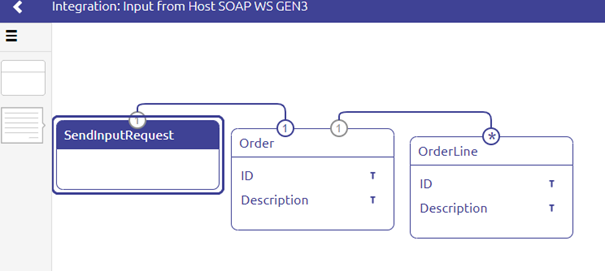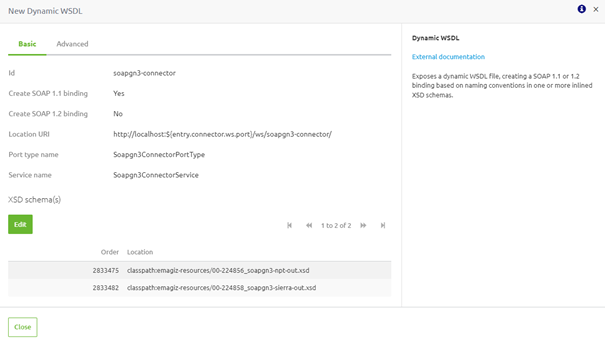Validate Incoming Messages
When setting up a point at which your customers can talk to you, eMagiz offers various methods of creating such a point. One of those options is to host a SOAP Webservice in eMagiz that handles XML messages asynchronously or synchronously. In this microlearning, we will zoom in on the part that validation of the messages plays when offering such a SOAP web service.
If you have any questions, don't hesitate to contact academy@emagiz.com.
1. Prerequisites
- Basic knowledge of the eMagiz platform
2. Key concepts
This microlearning centers around configuring your SOAP web service.
By configuring, we mean: Designing and determining the characteristics of the SOAP web service.
Crucial parts in the configuration are:
- Operation Name
- SOAP Webservice Namespace
- Validation
- Authentication
Of these four points, we will zoom in on the validation part of our SOAP Webservice in this microlearning.
3. Validate Incoming Messages
When setting up a point at which your customers can talk to you, eMagiz offers various methods of creating such a point. One of those options is to host a SOAP Webservice in eMagiz that handles XML messages asynchronously or synchronously. In this microlearning, we will zoom in on the part that validation of the messages plays when offering such a SOAP web service.
Crucial parts in the configuration are:
- Operation Name
- SOAP Webservice Namespace
- Validation
- Authentication
Of these four points, we will zoom in on the validation part of our SOAP Webservice in this microlearning. The SOAP Webservice serves as a point of entry where people with the proper credentials (security) and the correct answers (validation) can enter and perform their actions. In the previous microlearning, we talked about the security part. In this microlearning, we talk about the validation part.
3.1 Configuration on system message level in Design
As you have learned from the crash course, you can validate an XML message with the help of an XSD. This XSD describes data types, order, associations, and length of attributes. You can use such an XSD to validate what your clients send you. eMagiz will automatically define a WSDL based on the combination of system messages you provide for each operation you want to host. To ensure that the WSDL is created correctly, don't forget to add an entity called "Send{givenname}Request" to the (request) system message and an entity called "Send{givenname}Response" in case you have a response system message. An example of how this needs to be configured in Design is shown below.

3.2 Effect in Create
In the infra flow, eMagiz automatically adds a support object of the "Dynamic WSDL" type. In this support object, the link is made between the system message definitions and the WSDL that will be created based on this.

With this done, you have successfully added validation to your SOAP web service.
4. Assignment
Add validation to the SOAP Webservice we have been configuring.
This assignment can be completed with the help of the (Academy) project you created/used in the previous assignment.
5. Key takeaways
- Crucial parts in the configuration are:
- Operation Name
- SOAP Webservice Namespace
- validationvalidation
- Authentication
- Validation is done with the help of an XSD
- The WSDL is used for external documentation
- eMagiz will automatically generate the WSDL for you based on your system messages
- Do not forget to add the correct root entity to your system message to make the WSDL work
6. Suggested Additional Readings
If you are interested in this topic and want more information, please read the help text provided by eMagiz.
